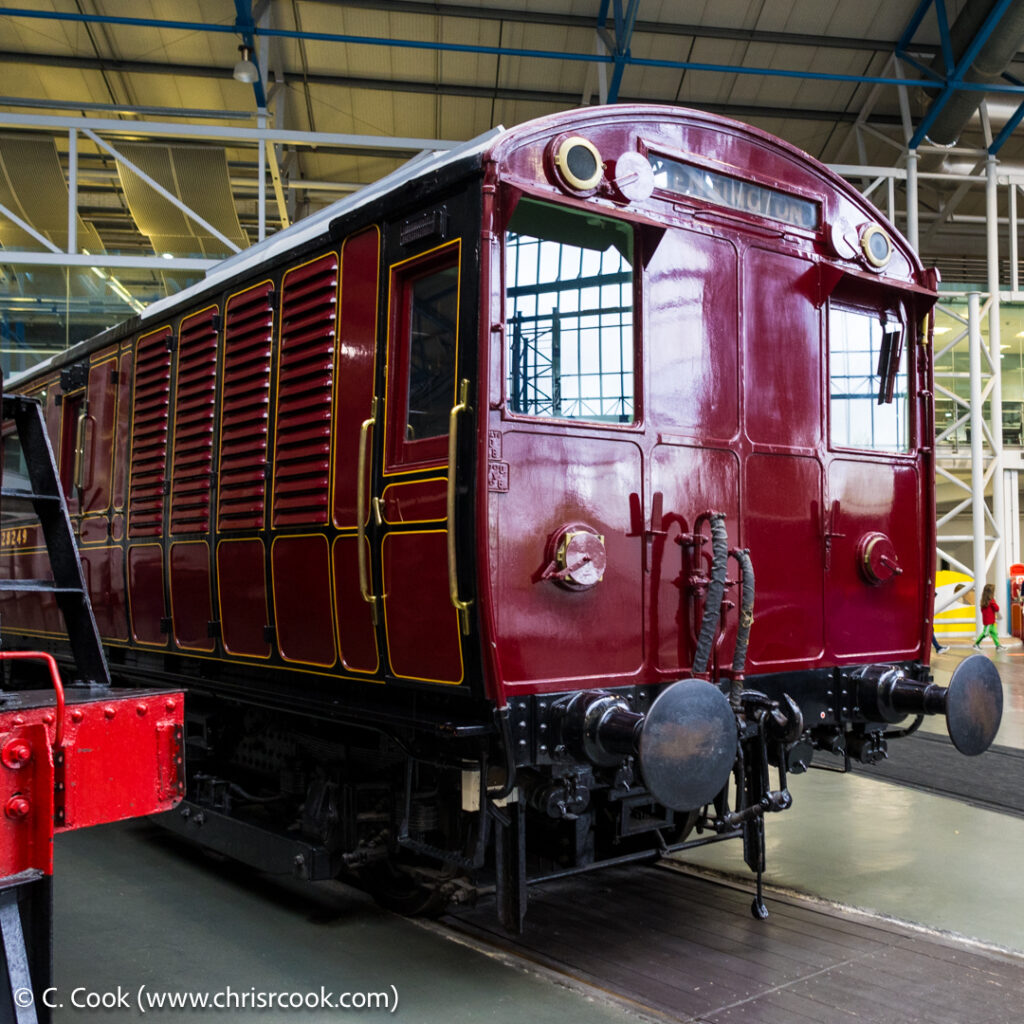A selection of photos of locomotives and rolling stock taken from a trip to the National Railway Museum in York taken in the May of 2024. The trip itself was a little disappointing; most of the museum was closed for refurbishment and I was glad that it was somewhere I’d popped into to kill some time rather than making an explicit, longer distance trip to visit.
Steam
No. 82, “Boxhill”
Built in Brighton in 1880 for the London Brighton & South Coast Railway, the A1 class No. 82 “Boxhill” remained in service until 1946. Recently the National Railway Museum’s Youtube channel featured an in-depth look at this locomotive.
Science Museum Object: 1975-7012
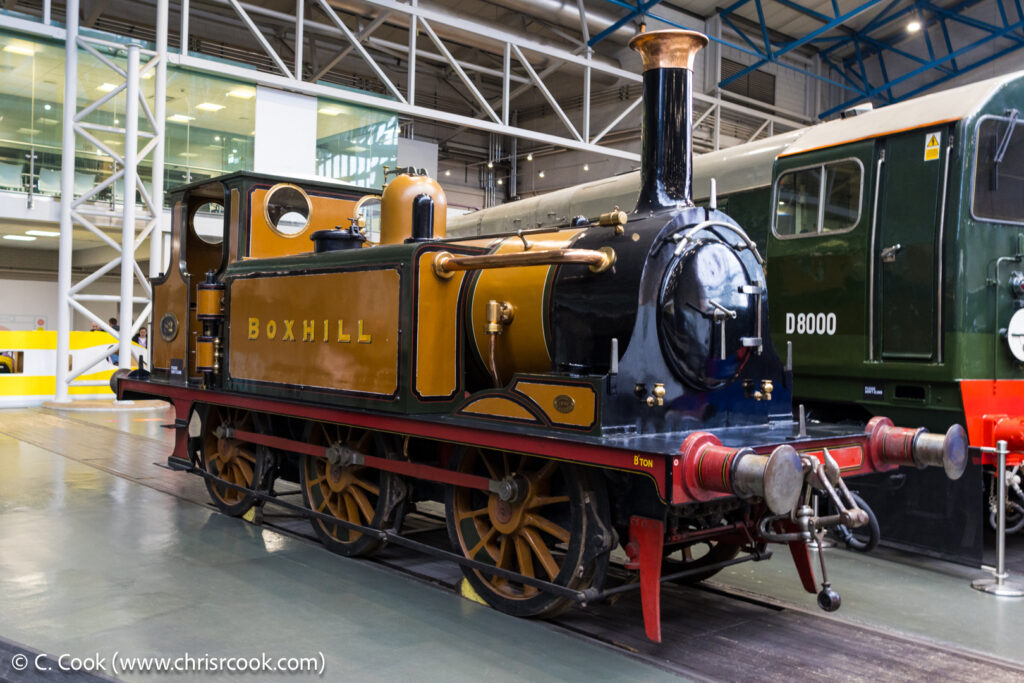

No. 1275
No. 1275 is a North Eastern Railway 1001 Class steam locomotive built in 1874 by Dubs & Co. of Glasgow. No. 1275 was eventually withdrawn in 1923 after 49 years of service.
Science Museum Object: 1975-7009
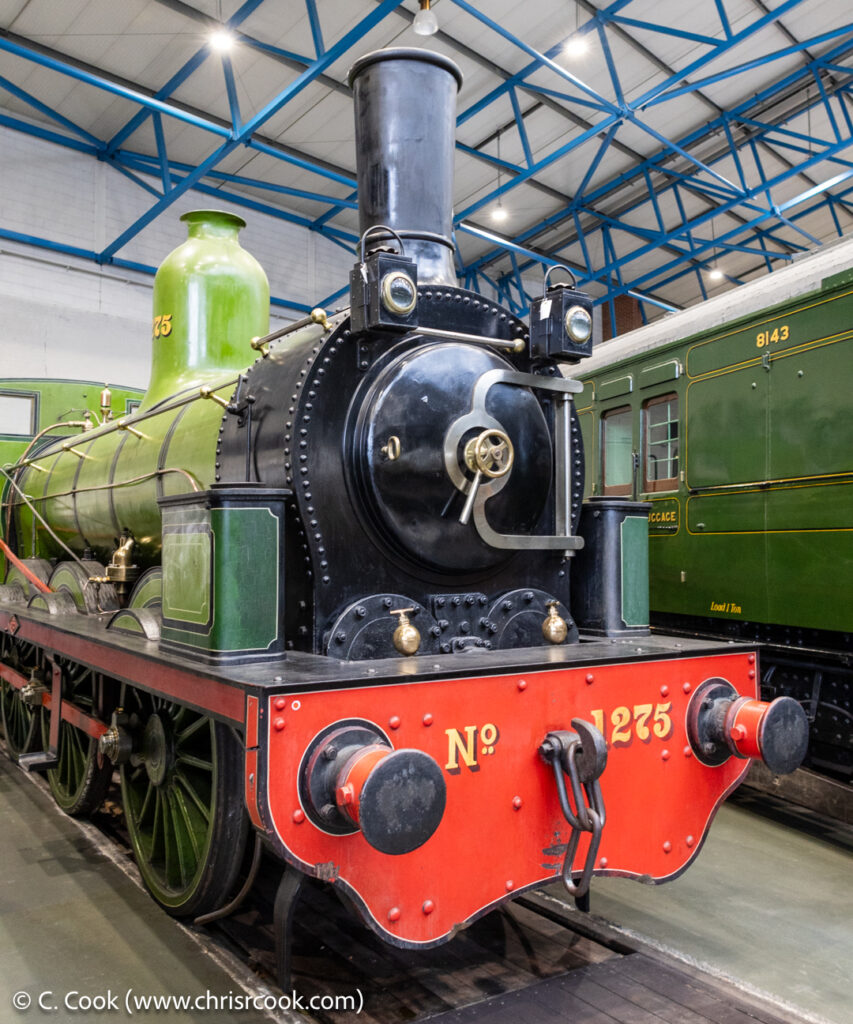
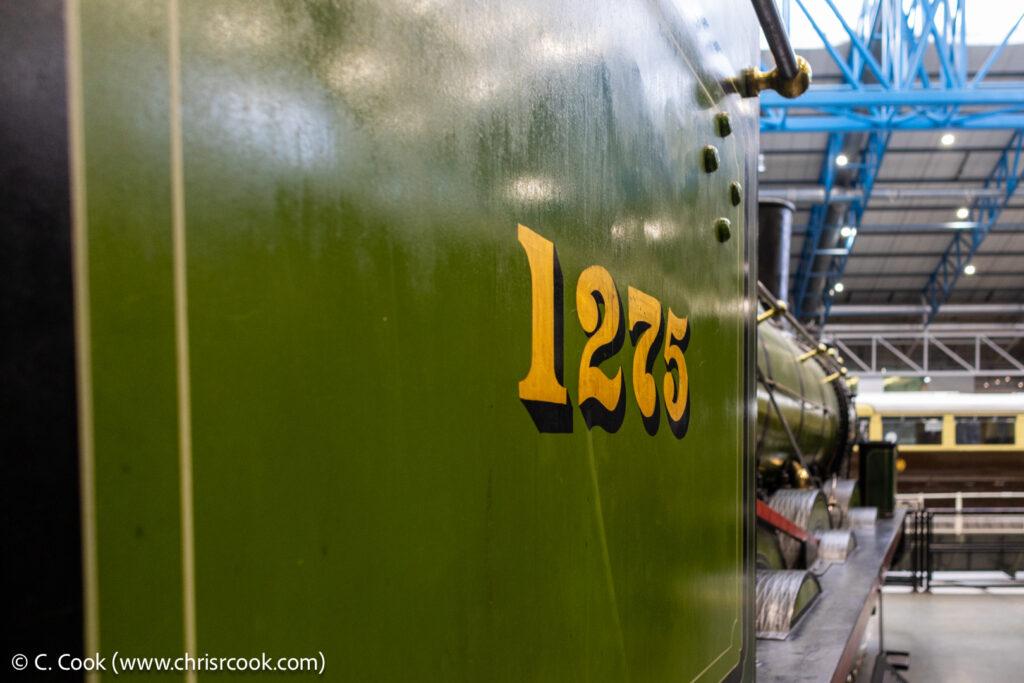
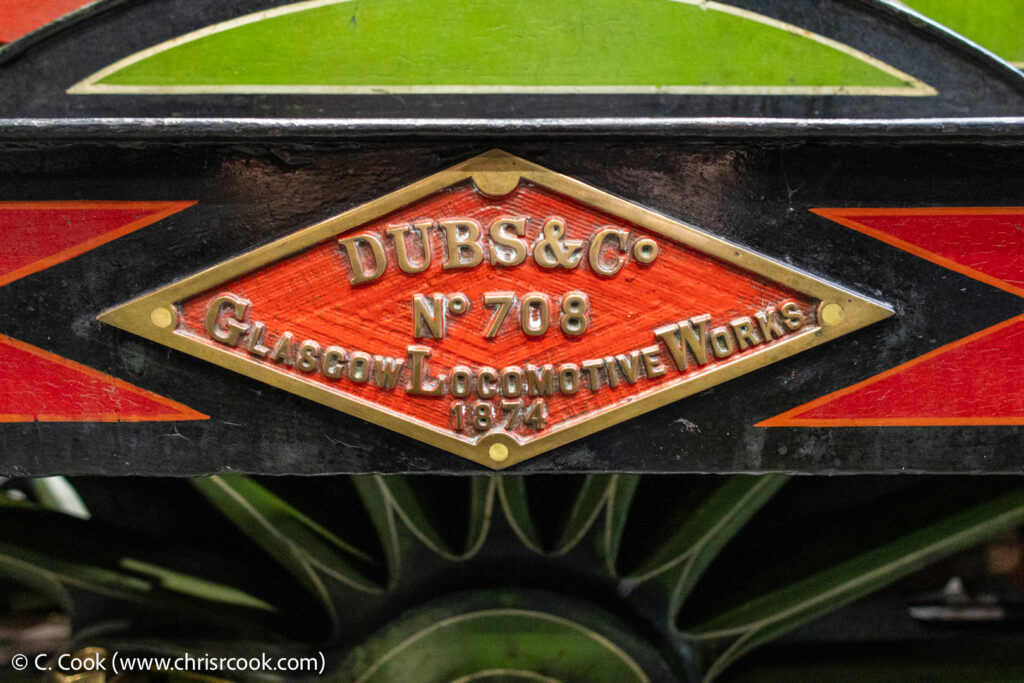
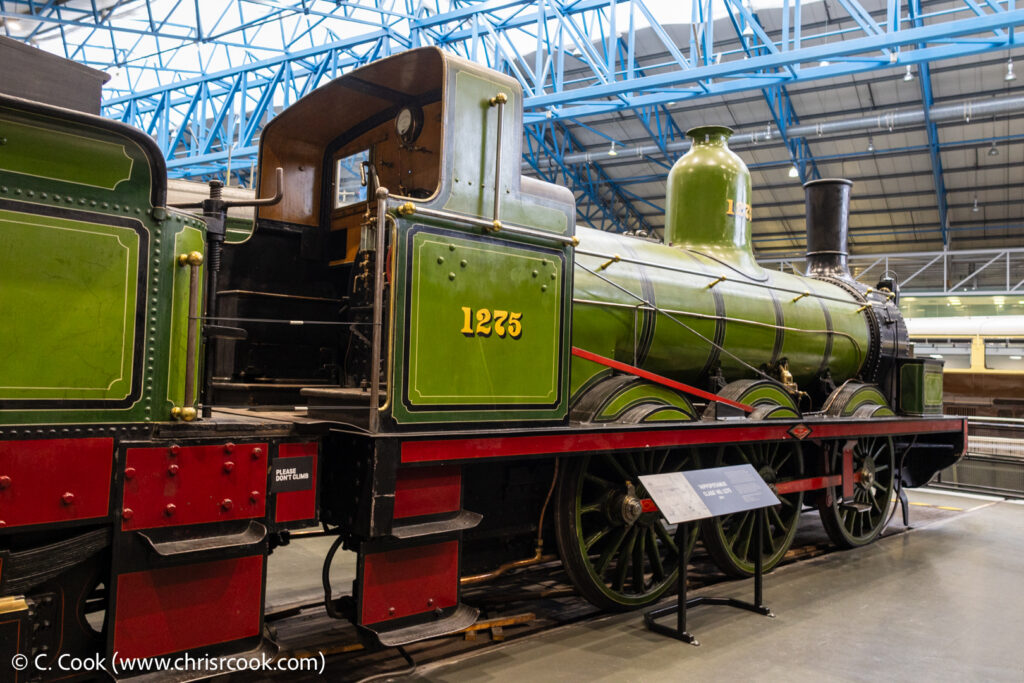
No. 390
Built in 1896 by Sharp Stewart for the Cape Government Railway, in 1910 no. 390 was renumbered to ‘SAR 993’ and transferred to South African Railways. After working in various parts of South Africa until 1973, no. 390 returned to the UK in 1975 where it entered heritage railway use. No. 390 became Railway Museum property in 2004.
Science Museum Object: 2005-7445
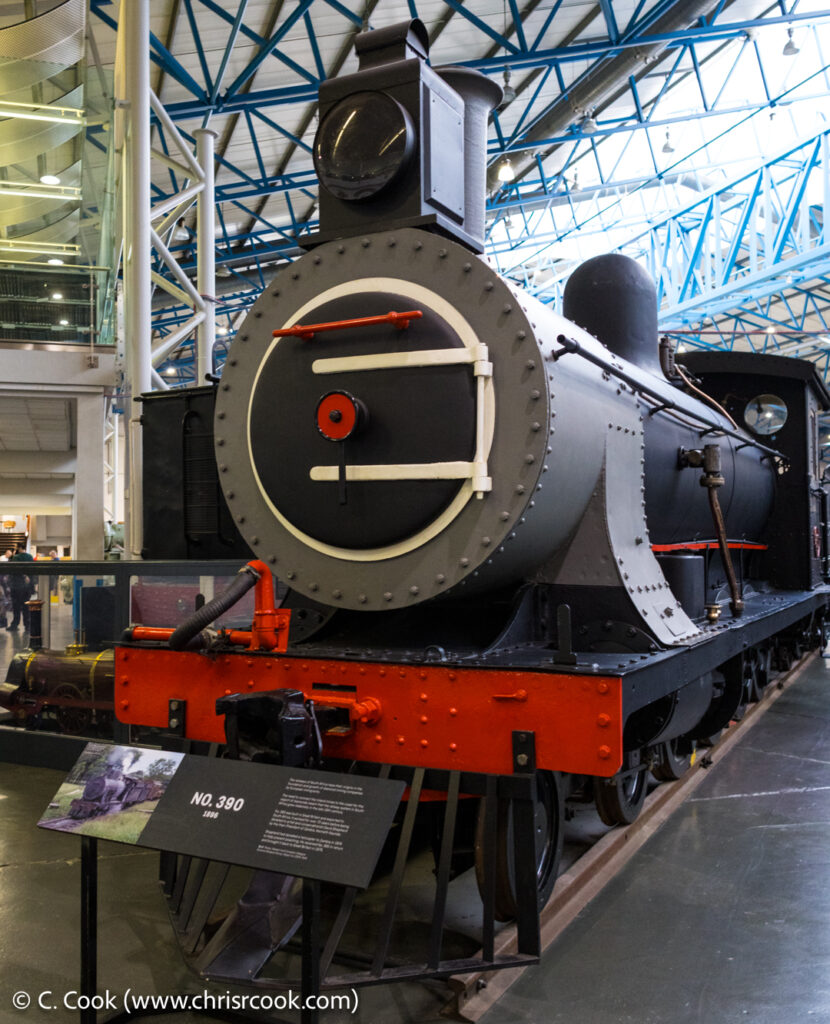
No. 4003
No 4003 “Lode Star” was build in Swindon in 1907 to a design by G.J. Churchward for the Great Western Railway. After transfer to the newly-formed British Rail, no. 4003 was retired in 1951.
Science Museum Object: 1978-7027
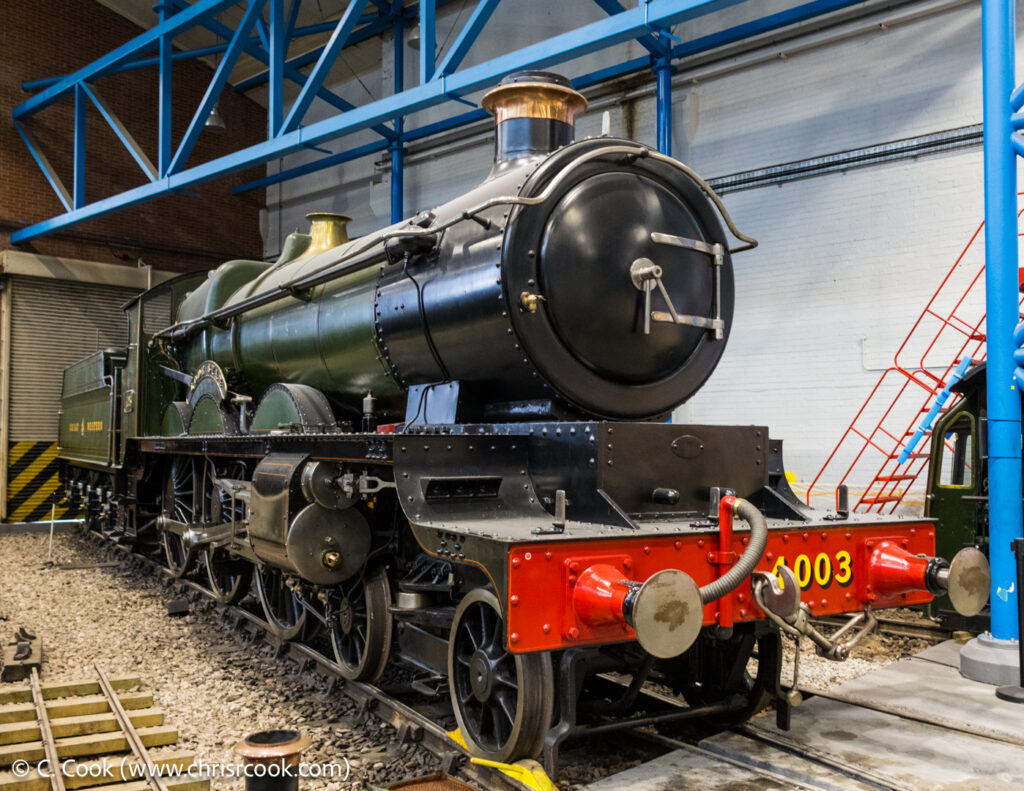
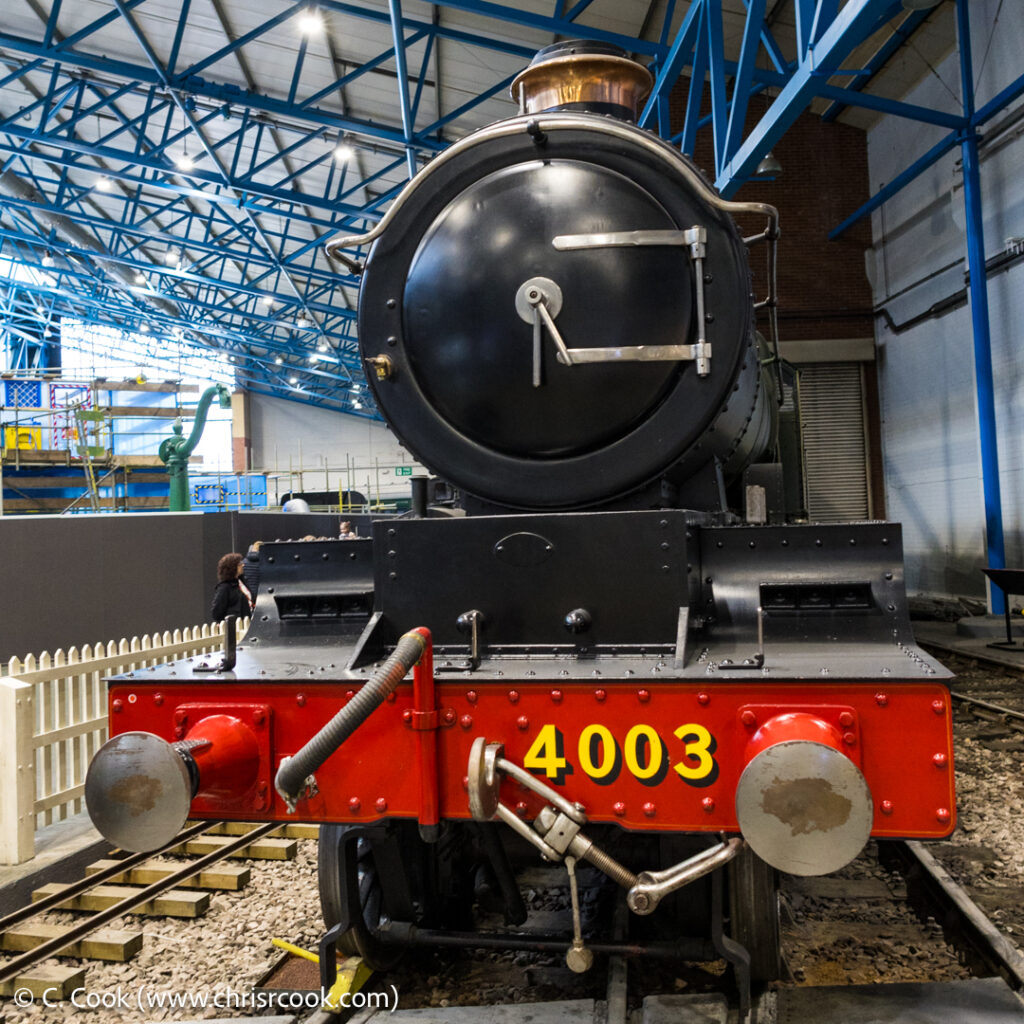
No. 4468
Possibly the most beautiful train at the National Railway Museum, No. 4468 ‘Mallard’ was built in Doncaster in 1938 for the LNER to a design by Nigel Gresley. In July 1938 ‘Mallard’ archived a speed of 126mph which still remains the highest speed ever officially reached by a steam locomotive. After the war, ‘Mallard’ was transferred from the LNER to British Rail where it served until retirement in 1963. After preservation by the British Transport Commission ‘Mallard’ entered the National Railway Museum’s collection in 1975.
Science Museum Object: 1975-7007
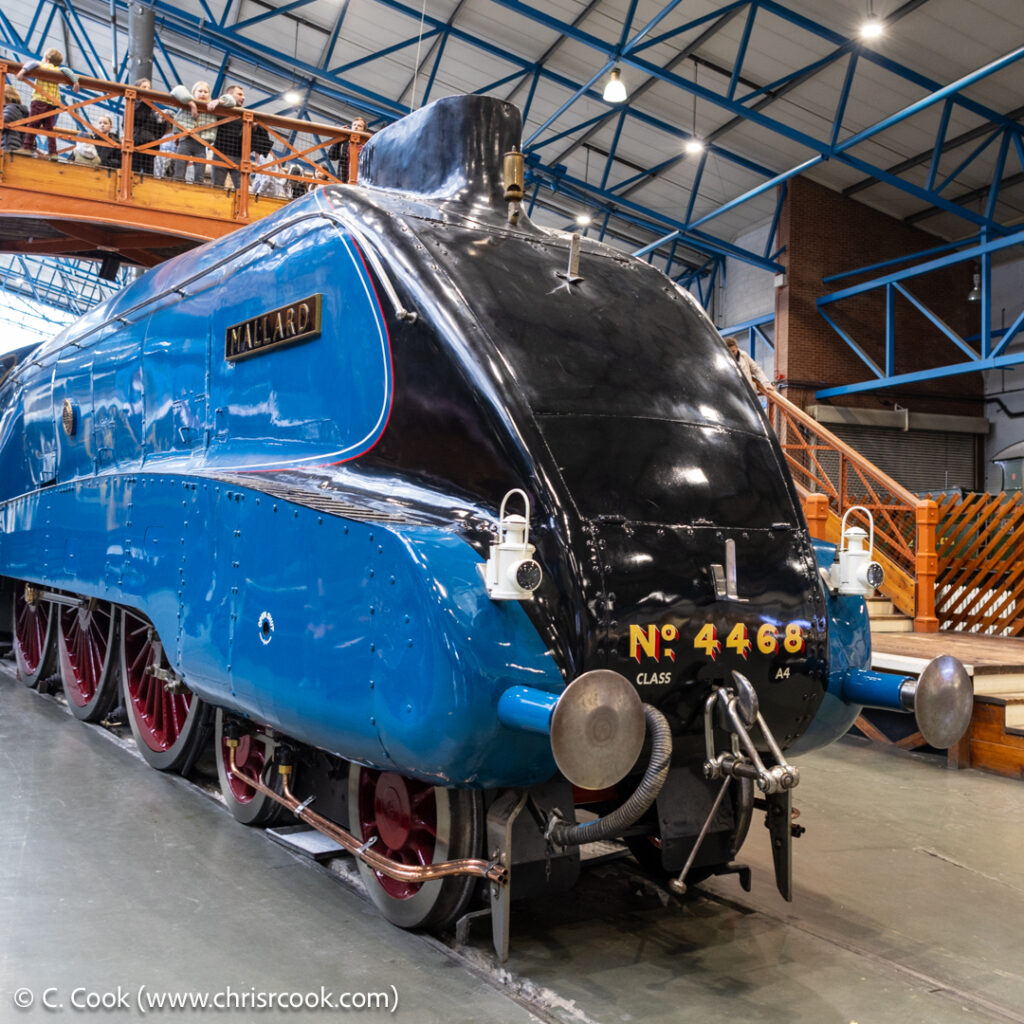
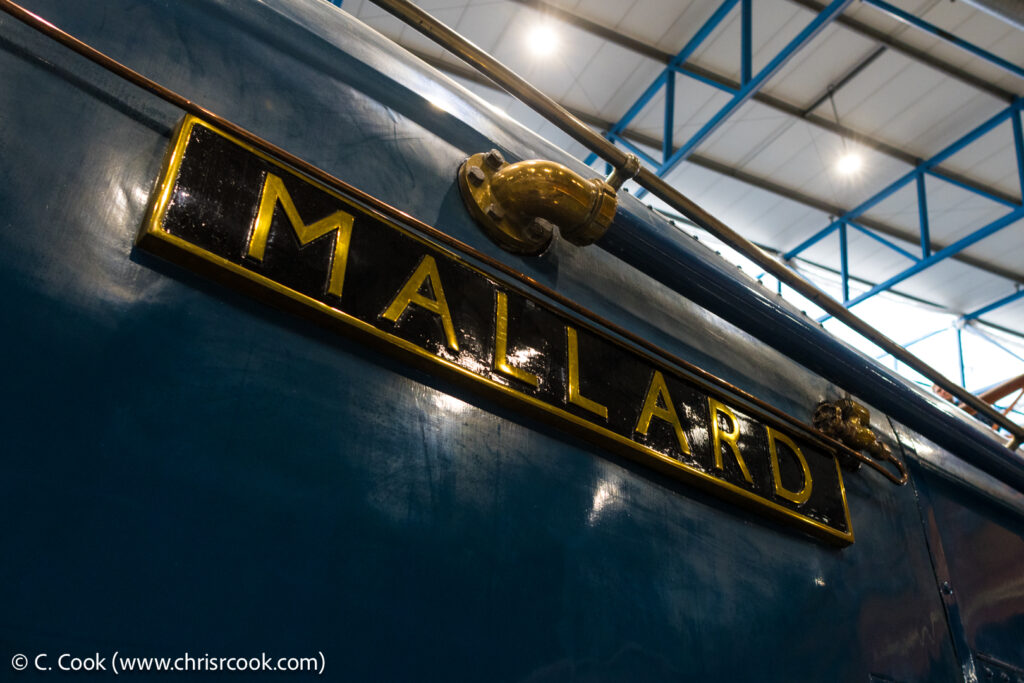
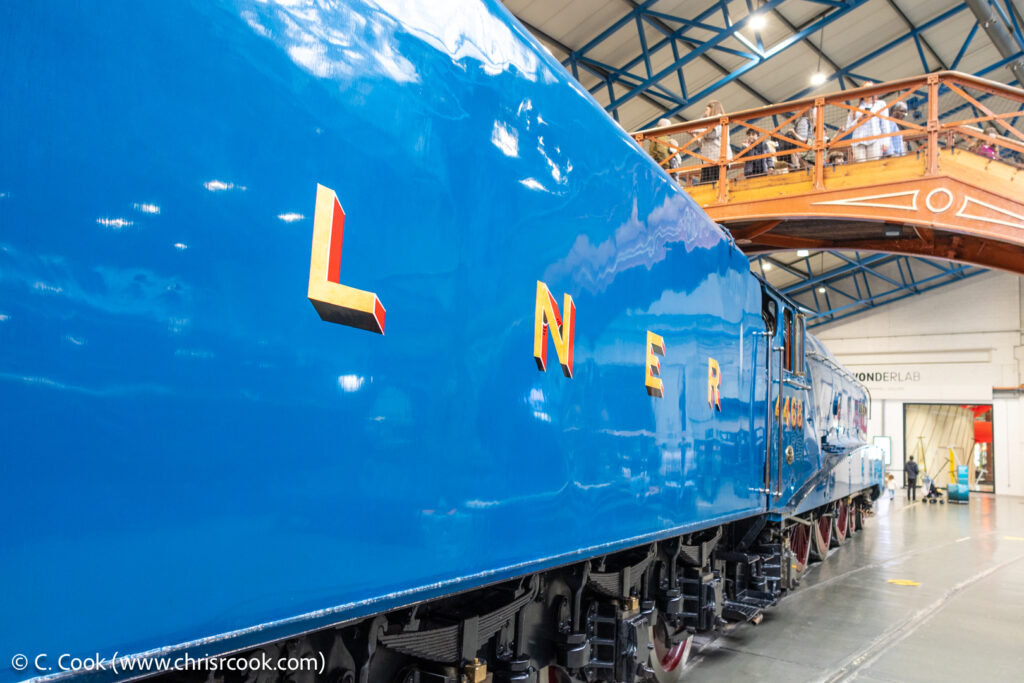
‘Rocket’
Constructed in 1979, this working replica of Stephenson’s ‘Rocket’ was built to commemorate the 150th anniversary of the Rainhill Trials.
Science Museum Object: 1979-7002
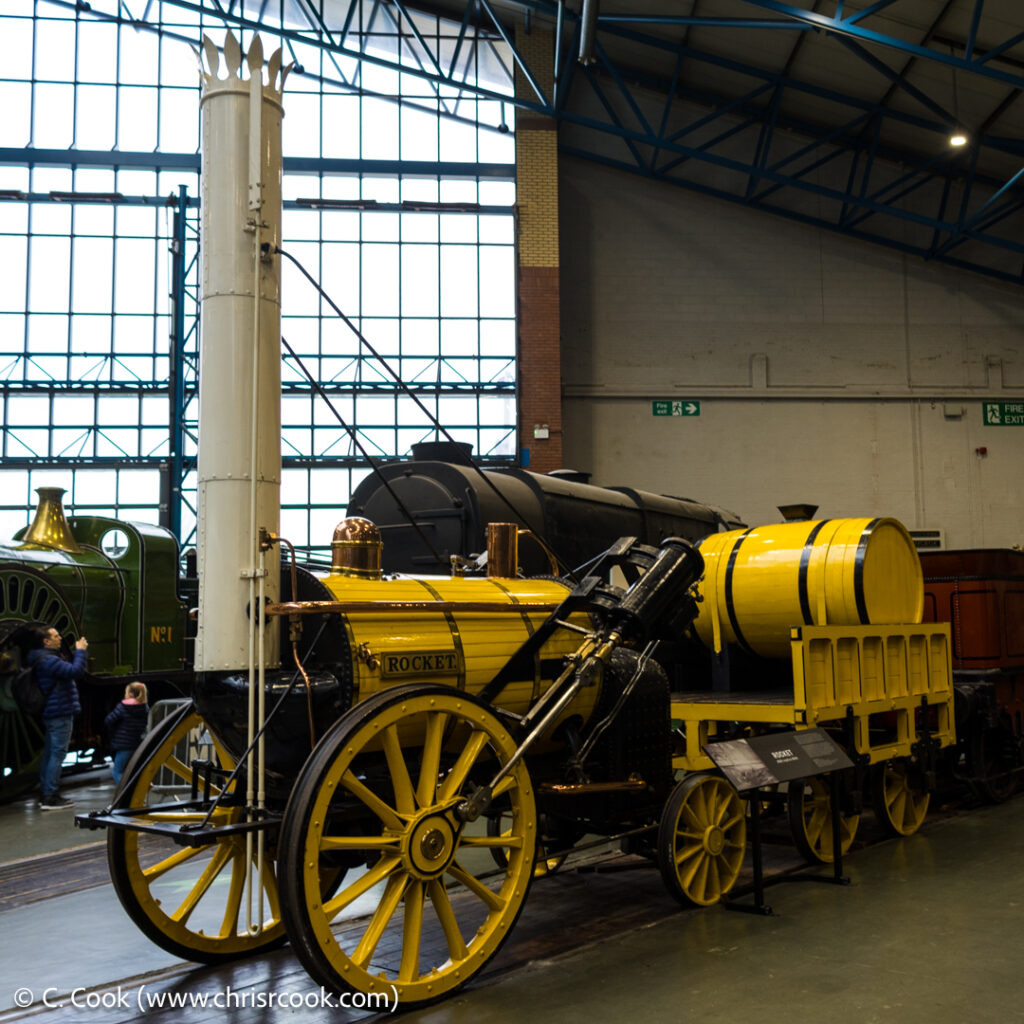
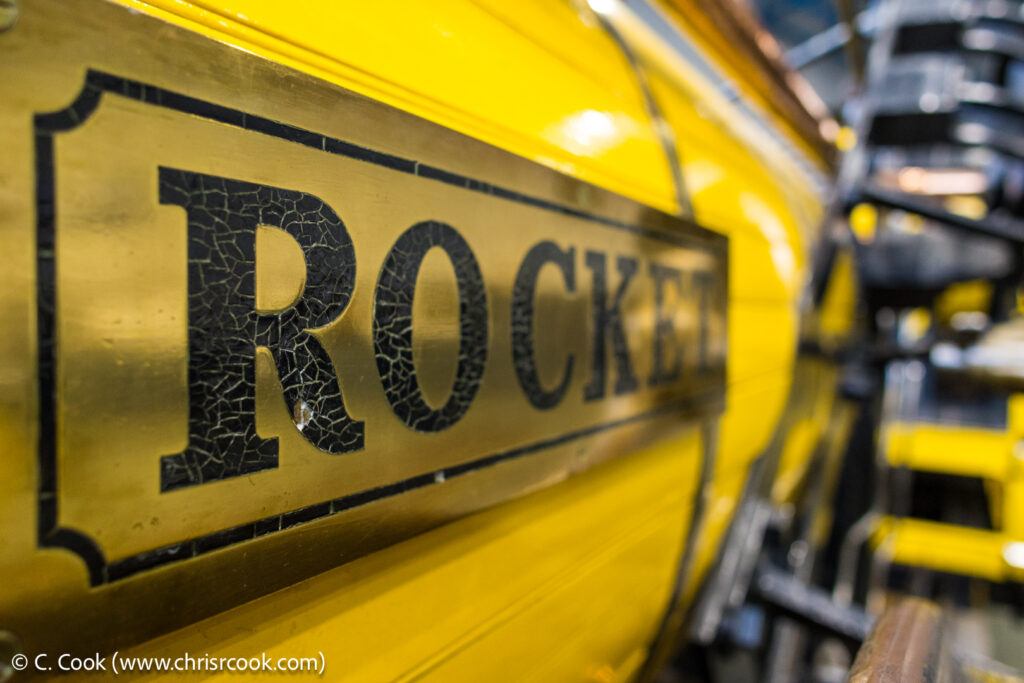
No. 6229
Built in 1938 for the London, Midland and Scottish Railway as one of thirty-eight Coronation Class locomotives, No 6229 ‘Duchess of Hamilton’ spent the early years of the war trapped in the United States after being shipped across the Atlantic for the 1939 World’s Fair. Returning in 1942 no. 6229 then spent time working for first the LMS and then the newly formed British Rail, before eventually retiring in 1964. After spending some time as play equipment for Butlins, No 6229 entered National railway Museum control in 1976.
Science Museum Object: 1976-7000
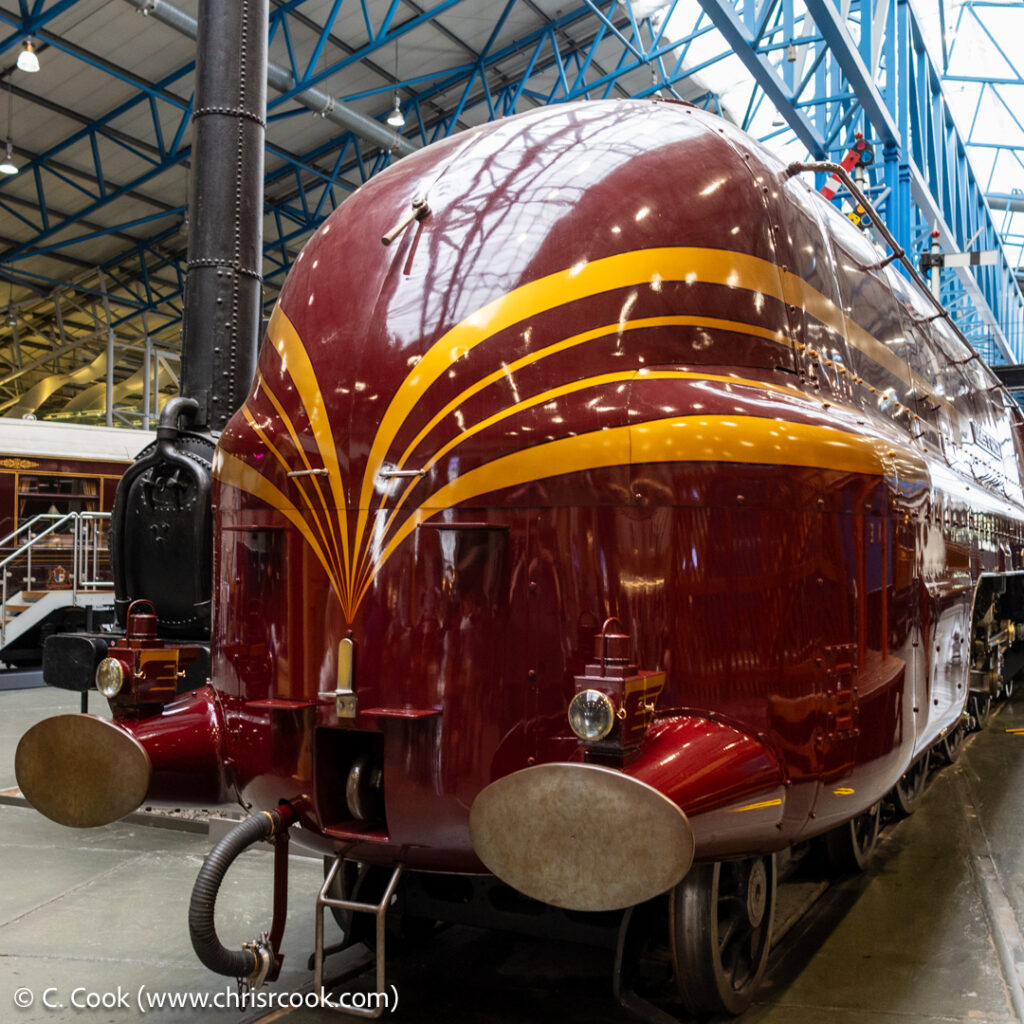
No. 3
Built in 1846 for the Furness Railway, No 3, ‘Coppernob’ was designed by E Bury and constructed by Bury, Curtis and Kennedy Ltd. Retired in 1900 after 54 years of service, No. 3 passed through various collections and exhibits before entering the National Railway Museum’s collection.
Science Museum Object: 1975-7015
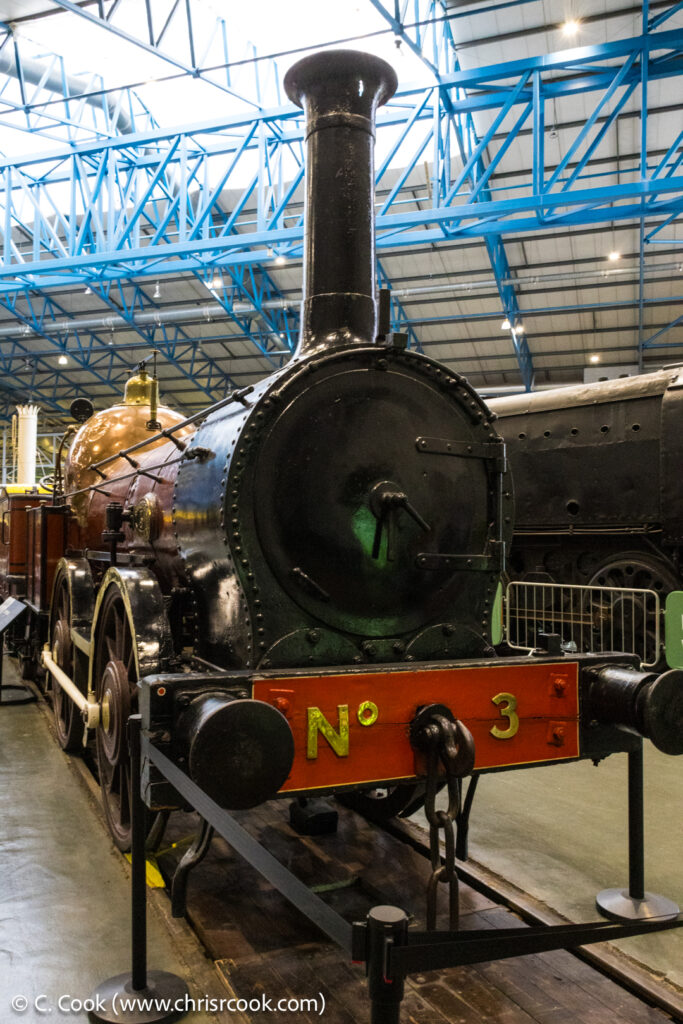
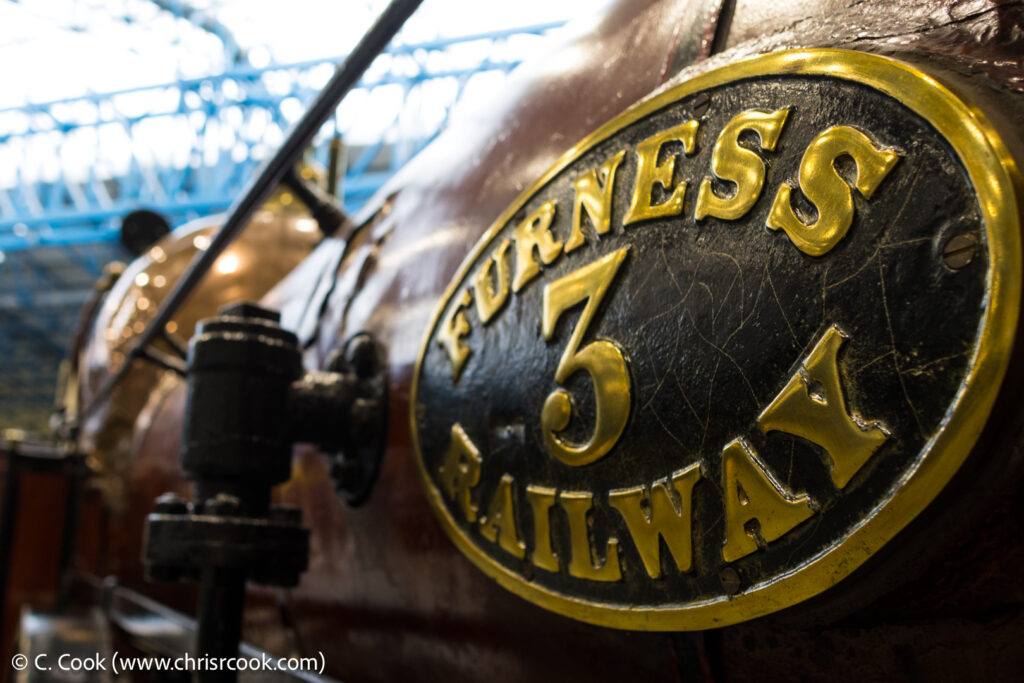
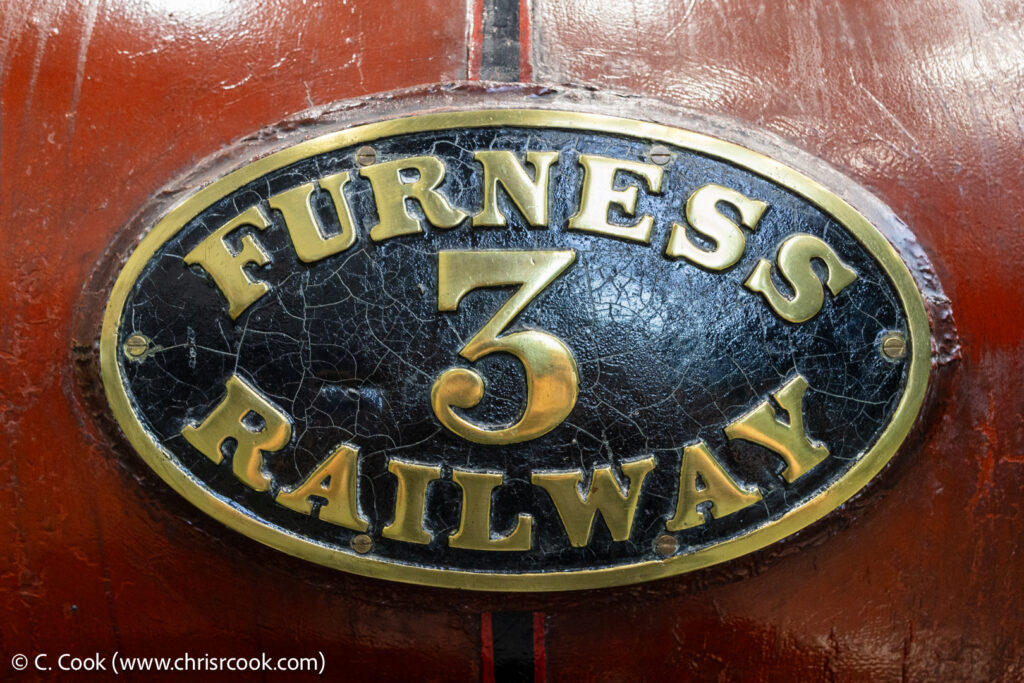
No 737
Designed by H S Wainwright for South Eastern & Chatham Railway and built in Ashford in 1901, this D Class locomotive had a service life of 55 years before it’s withdrawal in 1956.
Science Museum Object: 1975-7006
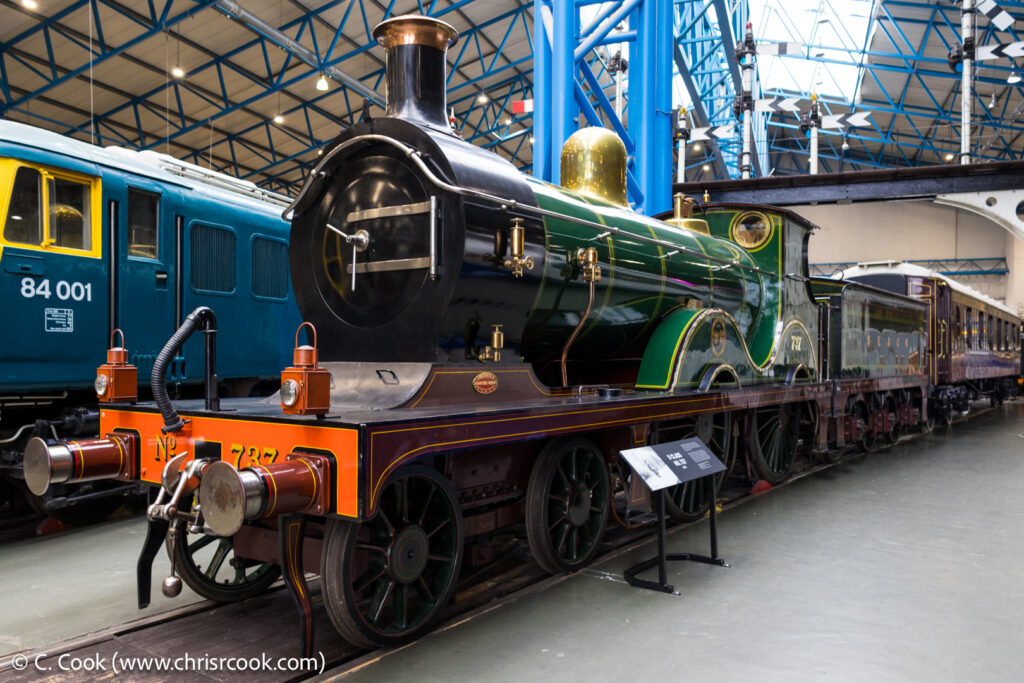
Diesel
GWR Railcar No. 4
Built in 1934 by Park Royal Vehicles, the diesel GWR Railcar No. 4 remained in service until the mid-1950s. Due to their stream-lined shape this class was known as the “flying bananas”.
Science Museum Object: 1978-7070
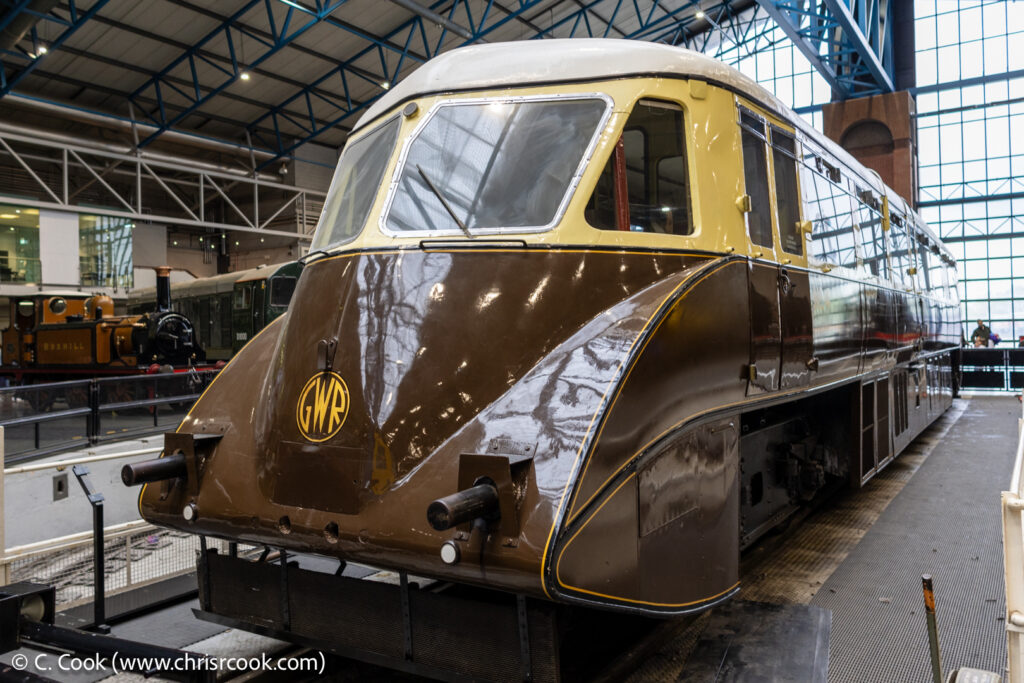
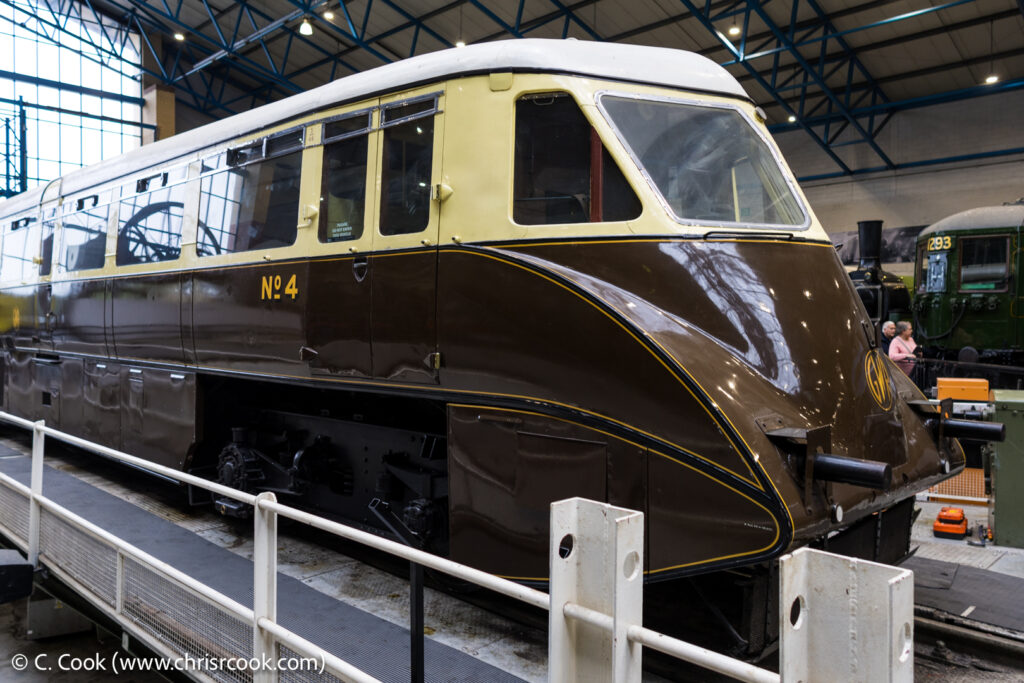
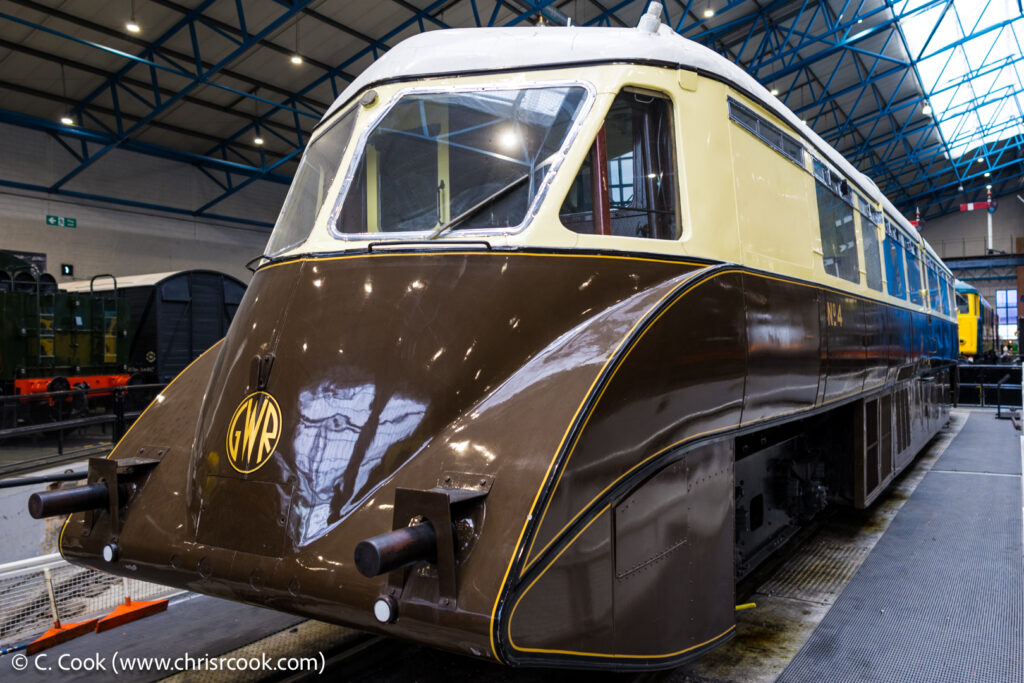
D8000
No. D8000 was an English Electric Type 1 diesel–electric locomotive built in 1957 at a factory near Warrington by the English Electric Company. In 1968 the English Electric Type 1 was redesignated as the British Rail Class 20 and, in 1980, D8000 was renumbered to 20050. Due to it’s reliability, some 228 English Electric Type 1’s were built between 1957 and 1968. This example has been restored to it’s original production numbering and livery.
Science Museum Object: 1981-7002
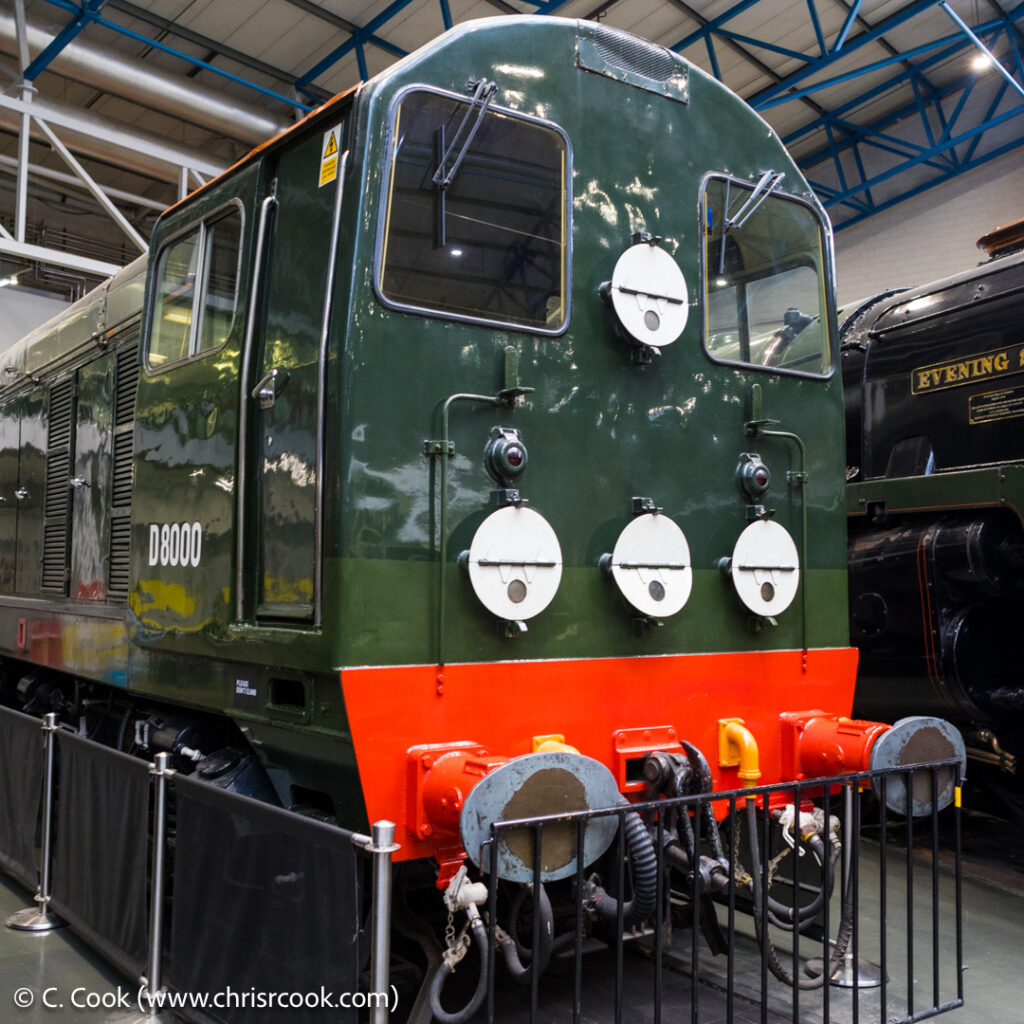
No. 43002
No. 43002 is a British Rail class 43 diesel-electric locomotive originally from the InterCity 125 High Speed Train set no. 253001. Originally built in Crewe in 1975, in 2016 No. 43002 was named “Sir Kenneth Grange” in recognition of it’s original designer.
Science Museum Object: 2020-105
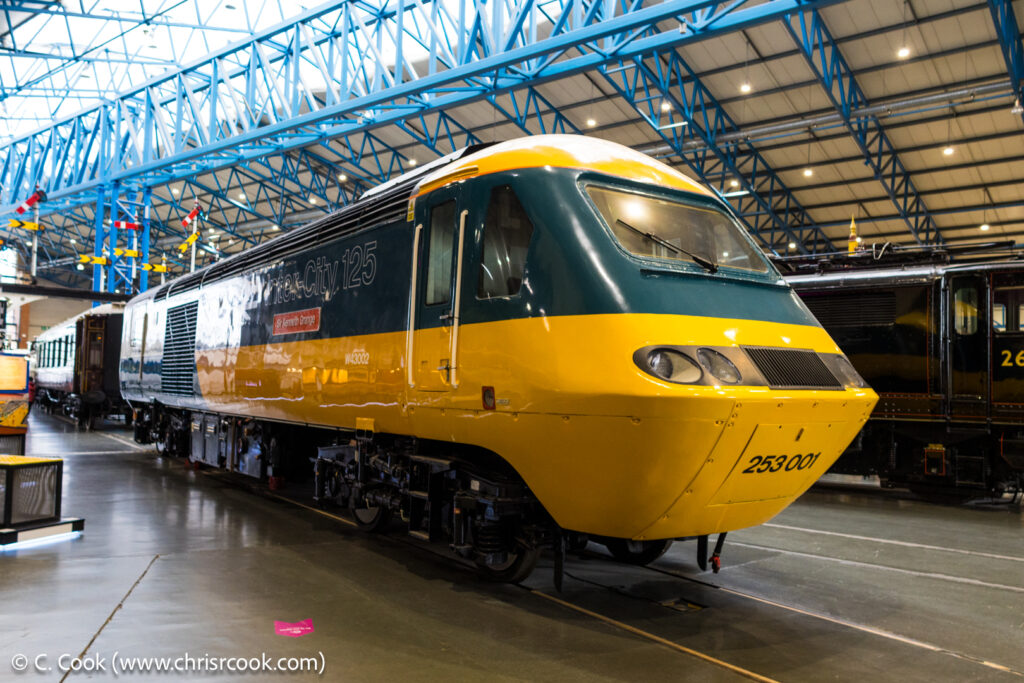
Electric
No. 373308
Powercar 373308 is an electric Class 373 and a former element of Eurostar set 3308. Built in 1996 by GEC Alsthom in the West Midlands, this variant of the Eurostar train set was designed to run ‘North of London’ – for direct connections between places like Manchester and the Continent, a service that never came into being.
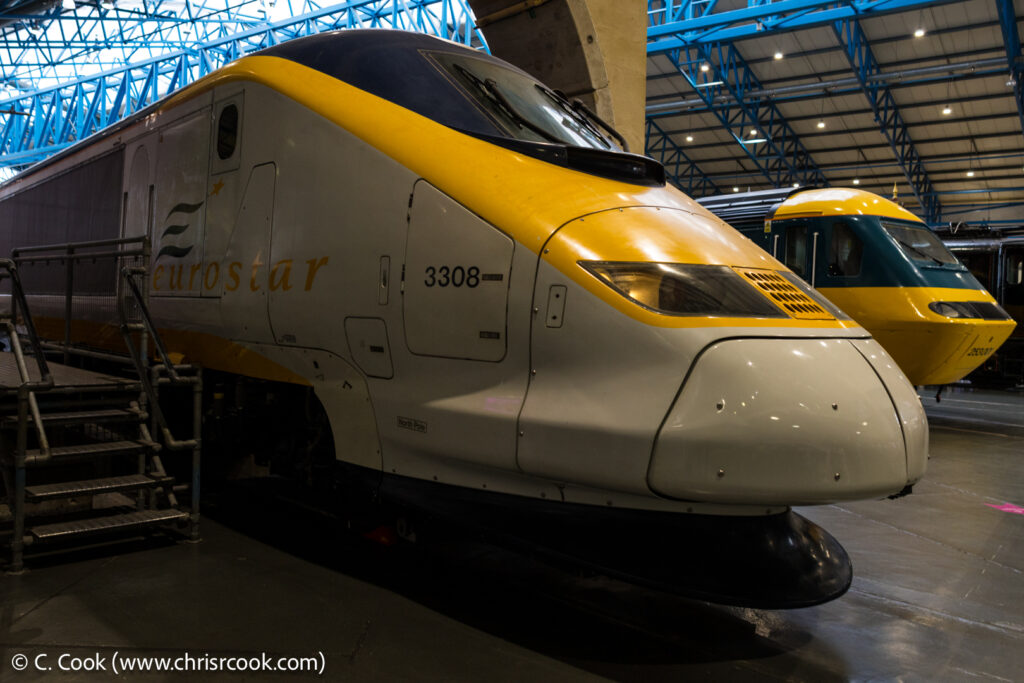
No. 84001
Locomotive no. 84001 is a Class 84 electric engine build in 1960 by the North British Locomotive Company in their Glasgow works. Built to operate on the West Coast Mainline, of the 10 Class 84s produced 84001 is the only one to have survived.
Science Museum Object: 1979-7001
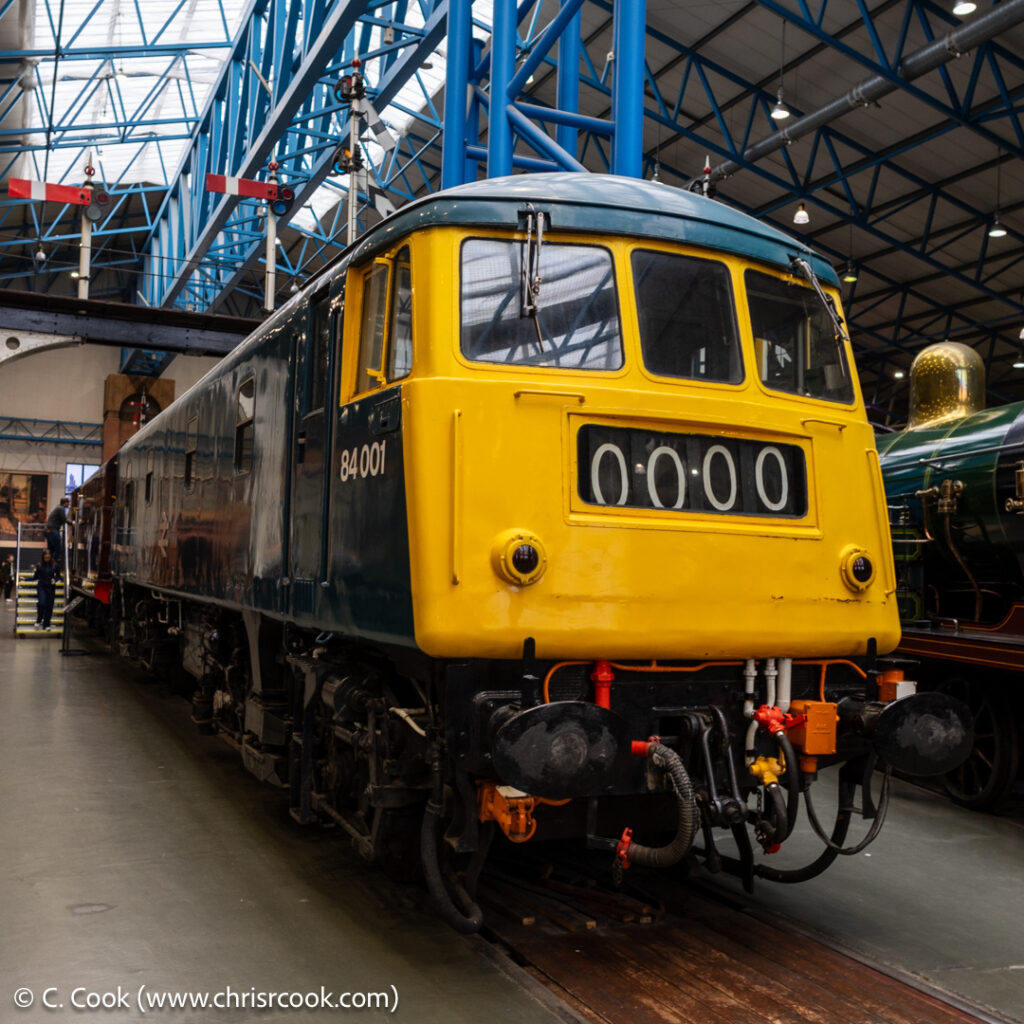
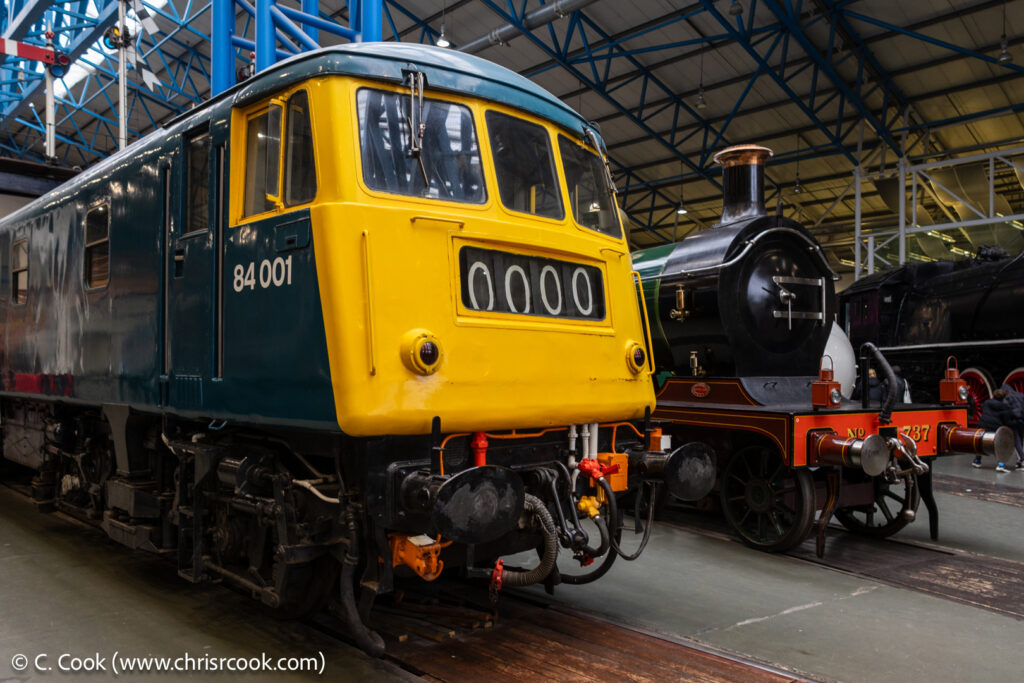

Rolling Stock
No 8143
No 8143 is a Southern Railway’s electric motor 3rd brake car from 1925.
Science Museum Object: 1978-7069
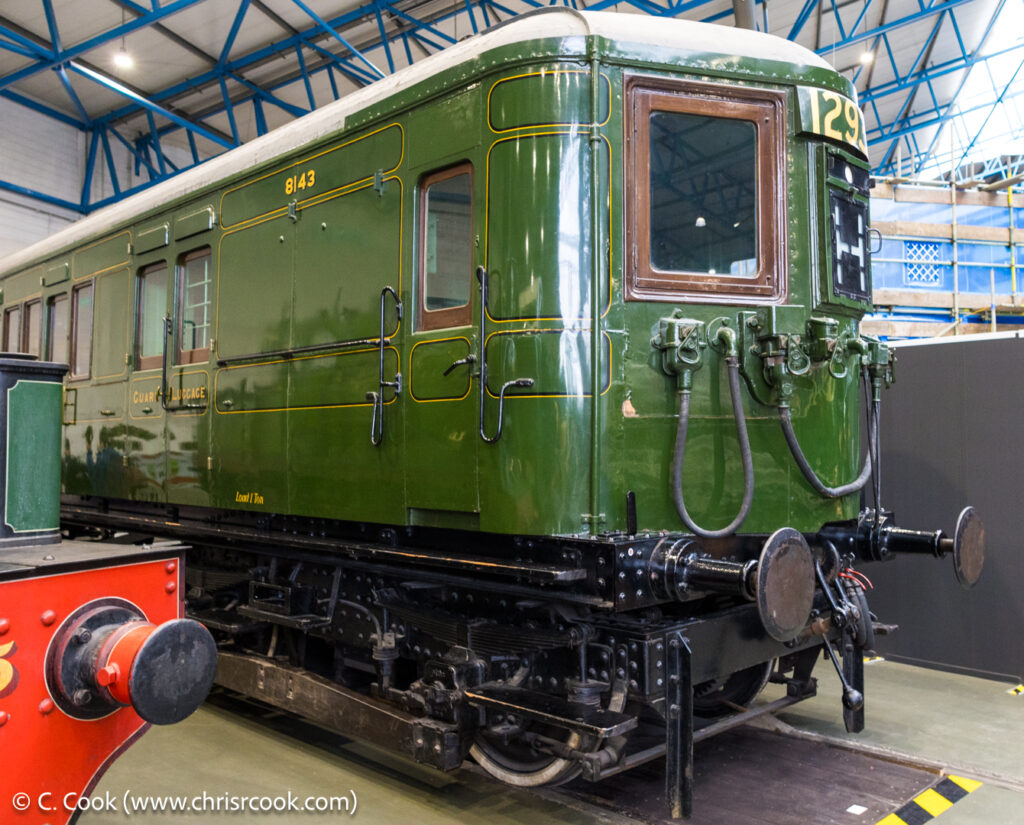
‘United Dairies’ Tanker
This glass-lined ‘United Dairies’ Tanker was constructed in 1937 and was used by the London, Midland & Scottish Railway to transport unpasteurised milk from farms in North Wales and Cumbria to centralised locations for pasteurisation. This tanker was later disposed of by the Milk Marketing Board in 1986.
Science Museum Object: 1988-7011
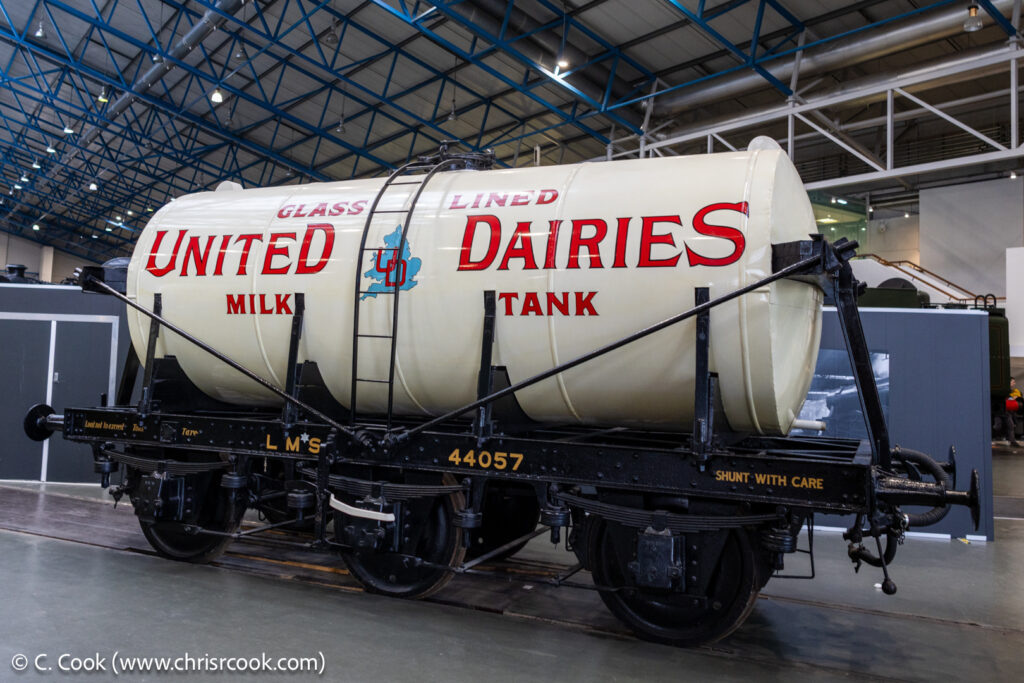

‘Traveller’
Built in 1930, ‘Traveller’ was a replica of a Liverpool & Manchester Railway 1st Class carriage from 1834.
Science Museum Object: 1975-7035
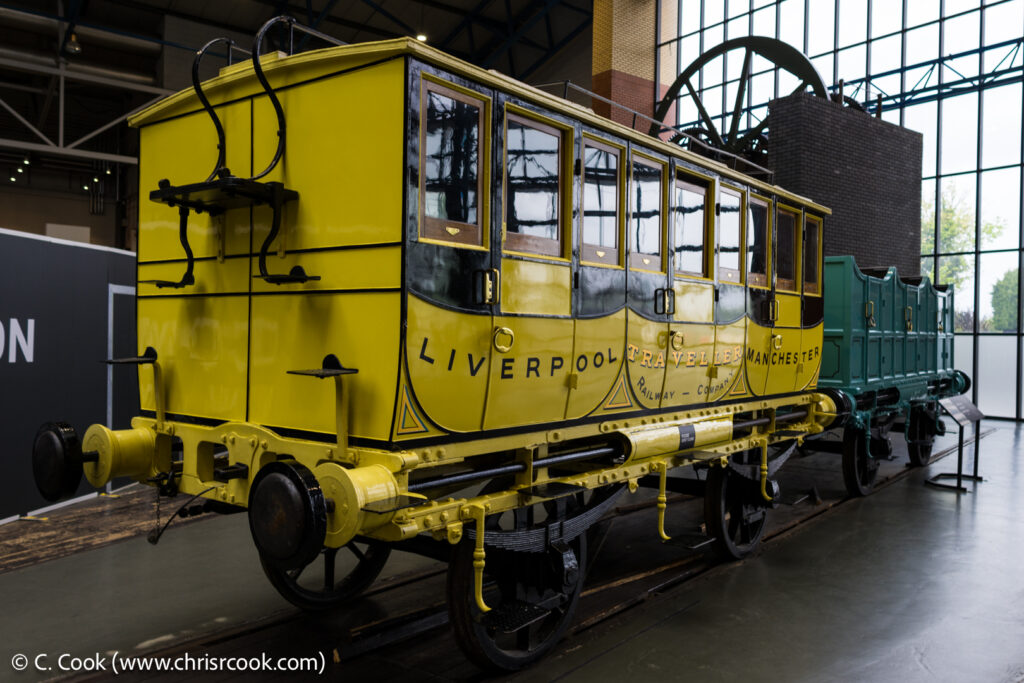
No 28,249
No 28,249 is a 1915 electric motor open 3rd brake built for the London & North Western Railway.
Science Museum Object: 1978-7068
